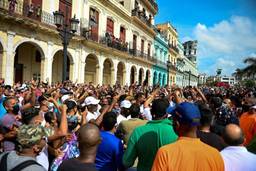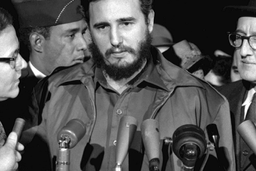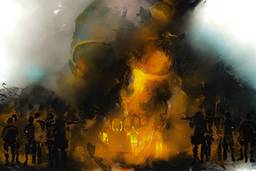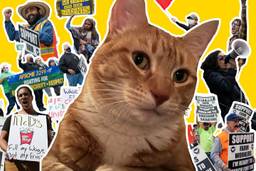The Second Coming of El Papa to Cuba
Pope Benedict XVI makes common cause with the Castro brothers.
Samuel Farber
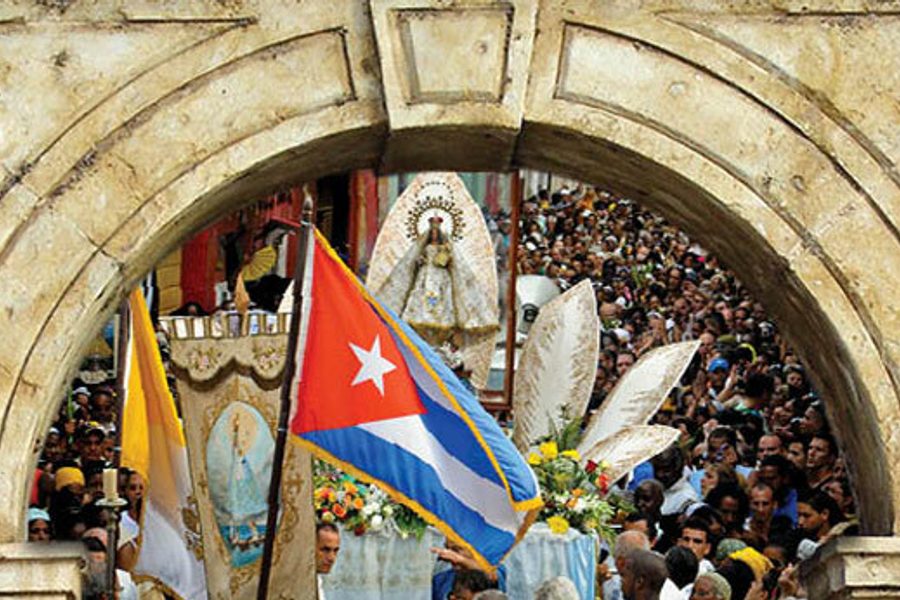
On March 26, Pope Benedict XVI will arrive in Cuba for a two-day whirlwind of religious ceremonies and meetings with the Castro brothers and other political leaders. Fourteen years will have elapsed since John Paul II became the first pope to visit the country in 1998. Yet Benedict’s visit will have a very different meaning than John Paul’s. Then, the Cuban Catholic hierarchy was in the initial stages of its approach to the Cuban regime in response to the island’s Communist Party having lifted, in 1991, its ban on religious practitioners joining the ruling party. This ban had deprived practitioners of Catholicism and other religions from access to the most desirable educational and job opportunities.
Since then, Cuba’s officially communist government and Catholic leaders have become improbable partners – sort of. The Cuban leadership welcomed the Church and the Spanish government’s participation in the negotiations leading to the release of most Cuban political prisoners in 2010 and 2011. Cardinal Jaime Ortega Alamino, currently the head of the Church in Cuba (who spent some time in the infamous UMAP labor camps when he was a young seminarian in the ’60s), has traveled to the United States and Europe to act as an unofficial diplomatic bridge between the Cuban government and Washington, as well as with the European Union.
In return, the Cuban Catholic hierarchy has obtained a number of institutional concessions from the Cuban government. Some involver ights that would be taken for granted in any democracy, such as organizing religious processions like Cubans’ celebration of the Virgen de la Caridad del Cobre, the island’s patron saint, an icon for Catholics as well as for practitioners of the Afro-Cuban Santer’a religion. The government has also allowed the Church to establish websites and electronic bulletins, and – more importantly in light of very limited internet access on the island – to publish dozens of print publications that collectively reach about 250,000 people. Although read by less than 5 percent of the adult population, they constitute the one significant exception to the government’s media monopoly.
The government has also provided material help in building a new Catholic seminary near Havana. The inauguration of which in November 2010 was attended by Raúl Castro.
Catholic realpolitik
Why has the Cuban government granted such recognition to the Church, allowing it to play an important role in the country’s political and social life? Cuba is not Poland, and Cuban Catholicism has been, even before the 1959 Revolution, among the weakest in Latin America. According to the National Catholic Reporter, less than half of the population identified as Catholic in 2006. It is therefore unlikely that the Cuban government has behaved in this manner to accommodate growing popular support for the Church on the island.
Instead, Raúl Castro has chosen the Church as a negotiating partner to implement his foreign policy designs, because the Church is a Cuban institution that is simultaneously part of an influential international organization. Indeed, the Church is the most important institution on the island outside of the government’s control. In addition, the Church has a degree of moral authority that the government may attempt to harness to defend the legitimacy of the regime from growing corruption, especially after the octogenarian Castro brothers pass from the scene.
The cooperation between political and Catholic leaders runs parallel to broader changes on the island. The economic reforms approved at the Sixth Communist Party Congress of April 2011 point to the establishment of a Sino-Vietnamese model – political authoritarianism combined with a state capitalist economy. Doing its part, the Cuban Church has established business administration classes in association with the Catholic University of Murcia in Spain, and begun training self-employed workers, an activity from which the Cuban government has been notably absent.
Supported by the Vatican, it appears that Cuban Catholic leaders see tactical collaboration with the government as part of a long-term strategy to strengthen the church’s position and influence as the regime decays and recasts itself.
Meanwhile, the Church has disciplined and tried to isolate Cuba’s more militant priests, like José Conrado Rodr’guez, and laymen, like Dagoberto Valdés, who have dared to go beyond the hierarchy’s very mild diplomatic criticisms of the government’s dictatorial practices, while ignoring and sometimes rejecting outright the vitriolic attacks directed at it by the Cuban right ensconced in Florida.
The Church is hoping to achieve an ideological influence that can translate into major gains such as restrictions on, if not the abolition of, abortion. It is unlikely that such a change would have broad popular support except among some practicing Catholics.
But the biggest prize is the one the church has been pursuing for well over a century, long before the 1959 Revolution: the incorporation of Catholic teaching in public education.
The real political differences among Catholics on the island may end up helping the church pursue these goals, as they allow it to cover all bases, and hedge its political and ideological bets. Thus on one hand Palabra Nueva, the website of the Havana archdiocese, voices a conservative perspective, while on the other hand the Lay Council of the same archdiocese publishes Espacio Laical Digital, one of the few forums for the expression of non-Catholic liberal, social democratic and even leftist criticisms of the government.
In September 2011, the government allowed the Church to open the Félix Varela Cultural Center, named after a pro-independence priest who lived in the early part of the nineteenth century, in Havana. At the time of the opening, Cardinal Ortega declared that the facility would offer studies in philosophy, sociology and psychology, and hold art expositions, film screenings, concerts and other cultural events. The Center is bound to increase Catholic influence, though it is too early to tell the kind of political impact it will have.
In late March, as international media breathlessly highlight Pope Benedict XVI’s trip, remember this: The visit is the Vatican’s recognition of and reward to the Cuban Church and government for their partnership, and also the Cuban government’s reward to the church for its diplomatic role and loyalty.
Undoubtedly, the Cuban people will come out to greet Benedict XVI. But appearances can be deceiving. The Pope’s visit is an operation carried out by the Cuban religious and political establishments entirely for their benefit, as the island’s government attempts to renovate its rule from above.
Samuel Farber was born and raised in Marianao, Cuba. He has published many articles and books about Cuba, as well as about the Russian Revolution and other topics. He is a retired professor at CUNY (The City University of New York) and lives in New York City.
This article is the English version of “Reflexiones sobre el 11 de julio y lo que viene después,” published in the left-wing blog La Joven Cuba, one of the most important in the country, on Nov. 1, 2021. While La Joven Cuba (and many other Cuban critical blogs) have been repeatedly harassed by the Cuban government, the authorities have not yet been able to silence them.

